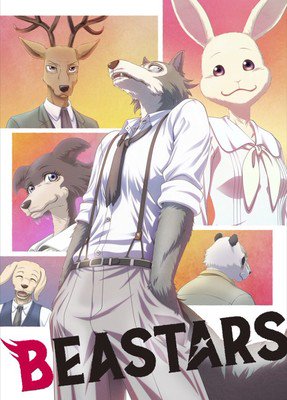Anime Limited's Cloud Matsuri Online Convention
Studio Orange Founder & CEO Eiji Inomoto & Producer Kiyotaki Waki
by Andrew Osmond,
 Orange studio founder Eiji Inomoto and producer Kiyotaka Waki sat down for a panel with Jeremy Graves on Saturday. While there were no specific announcements, Inomoto let slip that the company was working on a CG remake of an unnamed title – “Something that might be familiar,” he teased.
Orange studio founder Eiji Inomoto and producer Kiyotaka Waki sat down for a panel with Jeremy Graves on Saturday. While there were no specific announcements, Inomoto let slip that the company was working on a CG remake of an unnamed title – “Something that might be familiar,” he teased.
A major topic in the talk was the development of CG in Inomoto's career. As a freelancer, he started out supplying CG to videogames – this was back in the heyday of the PS2, which frequently used 3DCG in pre-game movies. Inomoto's first anime work was on Zoids; later he helped wrangle the Tachikomas in Ghost in the Shell: Stand Alone Complex. However, Inomoto cited his experience on the mecha series Aquarion as a turning point.
This was during the time when robot animation was shifting from being hand-drawn to being realized in CGI. Aquarion required multiple CG animators, and Inomoto foresaw that this demand would only rise. He founded Studio Orange in 2004 with Aquarion as one of its first CG credits.
Inomoto explained that the name has nothing to do with the fruit, but rather a joke about the company's modest origins. Orange refers to the Japanese phrase “ore ‘n’ chi,” which is an informal way of saying “My place.”
For years, Inomoto said, Orange was making “CG sections” for anime which were largely hand-drawn. But eventually Inomoto started feeling that wasn't enough. When Land of the Lustrous was proposed to the studio, Inomoto confessed, “I remember as I was saying we could do it, I wasn't actually sure.” If it had gone wrong, he said, there would have been no future for Orange.
 Instead, Lustrous' success led on to BEASTARS, which Inomoto saw as an opportunity to show off the studio's uniqueness, or its “Orange-ness.” He mentioned that he wanted to overcome some of the problems that the studio encountered when it made the opening film for the Star Fox Zero game. That film also involved animated animals. “Some things went well, others did not.”
Instead, Lustrous' success led on to BEASTARS, which Inomoto saw as an opportunity to show off the studio's uniqueness, or its “Orange-ness.” He mentioned that he wanted to overcome some of the problems that the studio encountered when it made the opening film for the Star Fox Zero game. That film also involved animated animals. “Some things went well, others did not.”
It was Kiyotaki Waki who proposed Orange's version of BEASTARS to TOHO animation. In his own comments at the event, Waki recalled how he first encountered CG when he was working at Madhouse and Chizu before joining Orange. In particular, Waki had been involved in Mamoru Hosoda's Wolf Children, a film with “wolf people” (when the werewolves are in hybrid form).
The characters in Wolf Children were hard to animate by hand, and Waki wondered if it could be done better in CG. On BEASTARS, Waki said, the challenge was to do justice to the animal characters' facial expressions and hairy bodies, while still staying true to their physical structures.
Inomoto contrasted the ‘more manga-like’ expressions of the characters in Orange's Land of the Lustrous against the very different animal facial expressions in BEASTARS. He used past Disney animation as reference, but BEASTARS also relied on facial capture, mapping human expressions onto animals' faces (you can find more in this ANN interview with the show's director). “It worked better than I expected,” Inomoto said.
Inomoto contrasted CG with traditional animation. Hand-drawn animation, he said, could be very precise and delicate; the strength of CG animation lay more in expressing feelings through bodily movement. Waki highlighted the greater volume of information, detail and movement in CG animation, which can affect the timing and editing, as well as the music and sound. In Inomoto's view, the hardest thing in CG was to express characters' emotions and make the audience feel for them as they would for real people. After all, not many years earlier CG had been used just to depict emotionless robots.
But in BEASTARS, Inomoto said, “We want people to cry because they empathize with Legosi.”

Inomoto said he could understand how Japanese viewers sometimes feel about a CG work; Waki added that Japanese viewers would get used to CG series over time as more of them were made. However, Inomoto said it was harder to know how foreigners would respond to a CG series like BEASTARS. His impression was that both Land of the Lustrous and BEASTARS were more popular outside Japan than they were domestically. He expressed his thanks for the positive feedback that Orange had received from overseas fans.
Of course, a vital factor in BEASTARS' overseas reception was its distribution on Netflix. Waki mentioned that the series would be offered to viewers as not just an anime title, but compared to live-action series. That, Waki said, affected discussions on BEASTARS' screenplay and structure. Waki also highlighted Orange's determination to meet new challenges in CG in its future anime, and he encouraged viewers to look at those anime and work out what problems the studio had solved.
discuss this in the forum (1 post) |
back to Anime Limited's Cloud Matsuri Online Convention
Convention homepage / archives